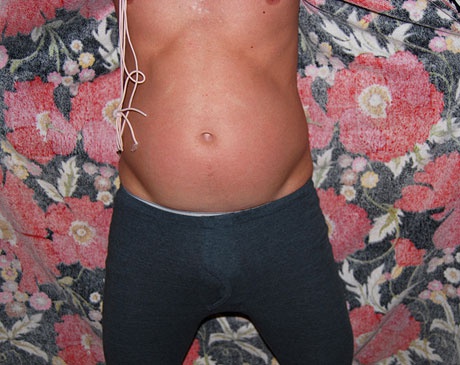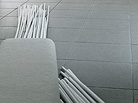Accidental Pleasures (2) — Strolls in Melted Chocolate — Bańda, Markiewicz, Smandek, Szymanowska
summary of ‘Accidental pleasures’ The catalogue summarising the cycle of exhibitions ‘Accidental Pleasures’, which was held at the Small Hall of the BWA Contemporary Art Gallery in...

Accidental Pleasures (4) — A Tiger Has Almost Devoured Me — Bartek Buczek, Radek Szlaga The common exhibition of Radek Szlaga and Bartek Buczek shows at similar threads in their creation. These artists, using various means of expression, collect...

Accidental Pleasures (3) — Enthusiasts — Kuba Dąbrowski, Katarzyna Skorobiszewska, Paweł Szeibel Three artists are invited to take part in another edition of the cycle Accidental Pleasures. Unaffected gestures which can transfer us into a gallery...

Accidental Pleasures (1) — Conceptual Pleasures — Gayer, Grospierre, Skąpski, Sztwiertnia, Ziomkowska The starting point for the cycle of exhibitions, which was held at the small hall, the alternative exposition space of the BWA Contemporary Art Gallery in...

Melted chocolate is hot and burning; it can’t be touched unless it starts to become cold and hard. Its liquid state evokes the danger connected with being undefined. Strolls in bubbling melted chocolate seem to be hedonist. They are seducing and repellent at the same time with the excess of sweetness, fragrance and glutinousness in which one can sink like getting bogged down.
During the second edition of the cycle ‘Accidental Pleasures’ the space of the gallery was annexed by objects connected with the sense of touch. Our skin and clothes, as well as flows between the inside and outside of the body which is matching to the space are the source areas of sensual pleasures which reveal the instability and softness of our body. The carnal location of identity results in inability of the subject to accept its own materiality behind which the necessity of decay is hidden. The awareness of fluidity becomes overcome with demarcation of limits enclosing the unknown areas which cannot be controlled. Going deeper in the experiences evoked by works of the invited artists means to provoke experiences that escape rationality: risky and liberating. The transitory nature and changeability which links them together and which is included in the title of the cycle, recalls the states of suspension and the lethargy of passing fascination.
Karolina Szymanowska’s installation entitled ‘Accommodation’ consists of a few mobile elements which are accommodating to the existing space. The brittle white tubes arranged in various configurations resemble the body which is bending or contracting depending on circumstances. They can be easily folded and put into a case, then quickly carried and matched in another place. They occupy and mark such a place like rapidly growing sticky web which can be torn away in one move.
Michał Smandek prepared a project called ‘Dance Floor’, putting bricks joined with red balloons on the floor. The repeated elements create a new ground which is hard and soft, stable and vibrating at the same time. Changes of the composition form are inevitable. With time air leaks form the balloons would become noticeable. Some of them will simply burst by themselves or in result of careless paces.
Małgorzata Markiewicz’s series ‘The Abandoned’ includes photographs of accidentally found clothes. The artist is investigating the sensation of the limits of the body, which separate what’s internal/personal from what’s external/public and prepared for meeting the Other. As J.P. Sartre wrote, ‘To put clothes on means to conceal our subjective status: to demand the right to see without being seen, or demand to be a pure subject’. Clothes appear in Markiewicz’s works as a tool which holds together our identity, managing to rise above the permanent dilemma, feeling of being a chaotic magma which is torn into pieces and freely dispersing in all directions. It allows for total enclosing of our own body in a limited structure, I mean the form. A tangle of colourful materials hidden in the parks resembles exotic flowers on the edge of blossoming and decay.
Basia Bańda’s photographs were displayed on the wall in a looping cycle. Views of details and apparently innocent situations create an opportunity for unexpected getting out of the routine of pleasant watching/peeping. An uncontrollable intensity of colours flows out from the frames, attacking the space reserved for the viewer.
The power of sight which can turn everything into a stone, like in mythic Medusa, what is a metaphor of fears of the inside, is waiting for those who dare to peep under the surface of the skin. The investigation of instable surfaces and activation of the touch may lead into the dark regions of perception. Strolls in an unknown territory can be dangerous.






